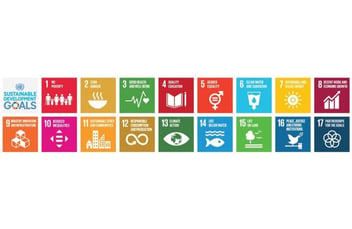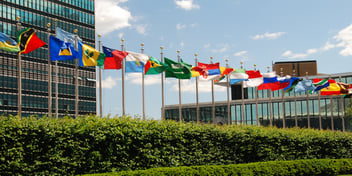Meeting SDG 6 and SDG 13 targets together
Providing access to sanitation and improving wastewater treatment are key SDG 6 targets. Meeting these targets can make a significant contribution to SDG 13 by reducing greenhouse gas emissions.
World Toilet Day reinforces the community benefits of safe sanitation and the size of the challenge we face. More recent thinking highlights how increased access to safe sanitation can at the same time contribute to climate action. More than half the world’s population, or 4.2 billion people, live without safely managed sanitation, according to UNICEF and the WHO.
In her article ‘Can the water sector deliver on carbon reduction?’, Corinne Trommsdorf writes about the opportunity that closing this gap presents for SDG 13:
“All over the world, slums are a vivid reminder of the difficulties that remain in ensuring full access to basic services. A paradigm shift might come from implementing a circular economy approach when expanding water services. The value of the energy, and the products recovered, could leverage the financing of the expansion. But the potential conversion of untreated sewage emitting around 40 kg CO2e per year per person into “zero emission” systems – if designed right – could be leveraged in the global climate mitigation talks to identify new funding.”
Estimating the potential for safe sanitation to reduce greenhouse gas emissions is complex and situationally specific, so it is difficult to extrapolate from the work undertaken to make global assessments. Nguyen et al (2016) work through scenarios for the Vu Gia Thu Bon river basin in Vietnam to estimate greenhouse gas emissions might be reduced by up to 16%. These scenarios include a combination of converting 30% of existing household latrines to Japanese Johkasou technology, and treating a further 20% of domestic wastewater by conventional activated sludge.
The International Water Association (IWA) presents a range of case studies bringing the circular economy approach to wastewater. These case studies draw greenhouse gas emissions estimates from the work of Water and Wastewater Companies for Climate Mitigation (WaCCliM), another IWA initiative conducted in partnership with Deutsche Gesellschaft für Internationale Zusammenarbeit (GIZ).
 Source: Anticipated GHG reductions in WaCClim pilots by 2018 https://wacclim.org/our-impact/
Source: Anticipated GHG reductions in WaCClim pilots by 2018 https://wacclim.org/our-impact/
Moving back to basics, the 2015 UNEP report ‘Economic Valuation of Wastewater – The cost of action and the cost of no action’ includes increased greenhouse gas emissions among the negative impacts of wastewater. The report also highlights the comparative benefits of ‘extensive’, or decentralised, wastewater treatment systems in terms of greenhouse gas emissions.
Others are exploring these ideas further, with a view to maximising the community benefits of meeting SDG 6 safe sanitation targets. Lahmouri et al (2019) analyse greenhouse gas emissions for centralised and decentralised wastewater systems with resource recovery strategies in Leh Town, Ladakh, India. Exploring alternative scenarios including a circular economy approach, the authors conclude that a fully decentralised water reclamation scheme with resource recovery would generate the least greenhouse gas emissions during both construction and operation.
The International Water Association has just established a new Specialist Group on Non-Sewered Sanitation to further the circular economy/resource recovery approach to wastewater management.
This article is from the AWA Sustainable Development Goals Specialist Network’s April 2020 newsletter. To join the SDG network please add us to your member profile. Other articles from the April newsletter can be read via the links below.
Australia as a whole has been flatlining on SDG 13
Victoria’s Zero Emissions Water initiative


